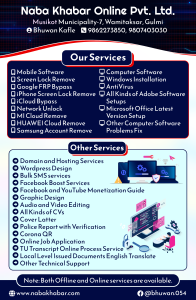Could some employees be afforded one day per week at home for keeping on top of paperwork, with in-office work scheduled for the other days? Companies may need to offer a little flexibility to managing hybrid teams. Choosing the right collaboration solution is one of the most important decisions you’ll need to make as you adopt a hybrid work model. When the pandemic hit, many organizations had to make quick decisions about what technology they were going to adopt to support a remote workforce.

In this model, the company may not have an office space and instead relies on team members in the same area to get together when they see fit. Twitter adopted this remote-first model and will allow all employees to work from home. When employees are working remotely, it can be difficult to maintain the same level of engagement and collaboration as when they are working in the office. To overcome this challenge, companies must find ways to keep remote workers connected to the rest of the team and ensure that they are included in important decisions and discussions. One of the main benefits of a hybrid work model is increased productivity.
What are the challenges of offering hybrid or work from home options?
Teams get the benefit of in-person communication without any setbacks if their software isn’t yet up to scratch. From March 2020, employees have been working from home, and in April last year, the company began its hybrid model, offering flexibility to employees. Implementing a hybrid work model is not a one-size-fits-all solution, and it requires a well-thought-out plan and effective communication. It’s important https://remotemode.net/blog/guide-to-understanding-hybrid-remote-model/ to establish clear guidelines, protocols and expectations for remote work, and ensure that everyone is on the same page. Also, companies must invest in the right technology, such as video conferencing and team collaboration tools, to support remote work and ensure that employees can remain connected and productive. Another key benefit of a hybrid work model is the ability to attract and retain top talent.
- In other words, although fully remote employees enjoy their flexibility, four in 10 would give up some of that time at home to have in-person office experiences.
- “You wind up with a two-tiered system and begin to treat women as second-class citizens,” warns Pozen.
- Two months before the company onsite happened, teams would create placeholders for future discussion and would say, “we should discuss this topic at the meet-up.”
- In Switzerland, some firms are so convinced that efficiency is lower on a Friday (and Monday) due to weekend overspill that they’ve banned or restricted remote working on those days.
To help organizations chart their way forward, Gallup has studied the experiences, needs and future plans of more than 140,000 U.S. employees surveyed since the onset of the pandemic. These insights paint a vivid picture of how different offices will be and the unique dynamics of a highly flexible workplace. A big part of successfully running a hybrid model is determined by where the leadership team spends their time. If the company leadership works primarily from the office, other people will also likely want to work from the office. This arrangement could unintentionally shift things to an office-first culture if it wasn’t already the case. Hybrid work models incorporate in-office and remote work in an employee’s schedule.
Gains on the gender pay gap: A precarious progress
Unfortunately for employers, employees don’t offer a clear consensus about their preferred remote-to-office ratio. Four in 10 employees want to be in the office two to three days per week — but that certainly isn’t the majority. Another three in 10 employees would prefer spending roughly one or two days in the office each week. https://remotemode.net/ The top three reasons employees prefer hybrid work represent a strong desire for more personal freedom to work when, where and how it best suits them. Their demands for better wellbeing, work-life balance and flexibility represent a new “will of the workplace” — one that won’t accept the traditional office going forward.
- The constant stream of digital communication can lead to mental fatigue, underscoring the need for proper work boundaries and digital wellness strategies.
- Having clear agreements in place before the return to work movement begins is key here for planning.
- Depending on where you are in the US, it can cost up to $595 per square foot (Washington DC).
- Companies that allow their employees to work from home or other remote locations can save money on office space, utilities, and other expenses.
- At the same time, 32% prefer a hybrid schedule, which combines the best of both worlds—flexibility from remote work and collaboration opportunities from in-office work.
- Talking about childcare responsibilities, the flexibility to work from home helps mitigate these challenges, allowing women to integrate their professional and personal lives more effectively.
The organization sets the days and times employees are allowed to work remotely or go into the office. For example, it could be that certain teams go into the office on Mondays and Wednesdays, while others go in on Tuesdays and Thursdays. Or an organization could allow everyone to work from home on pre-determined days each week.
Popular Solutions
“Business leaders can’t count on purpose or meaning or innovation to arise organically within a distributed work environment,” McDonald said. “It’s hard enough to make that happen when everyone is in the same place. Clearly communicating the vision for what’s next as the company formally transitions to a hybrid model will be important.” These results are based on nationally representative surveys of U.S. employees, defined as adults employed full time who are not exclusively self-employed. All surveys are based on self-administered web surveys conducted with a random sample of adults, aged 18 and older, who are members of the Gallup Panel.
Recruiters, project managers, technical writers, product marketing managers, customer success managers and graphic designers also feature prominently on the list of remote roles. The wide variety of these roles signifies the expanding scope of remote work across different fields. The computer and IT sector leads as the top industry for remote work in 2023 [6].














